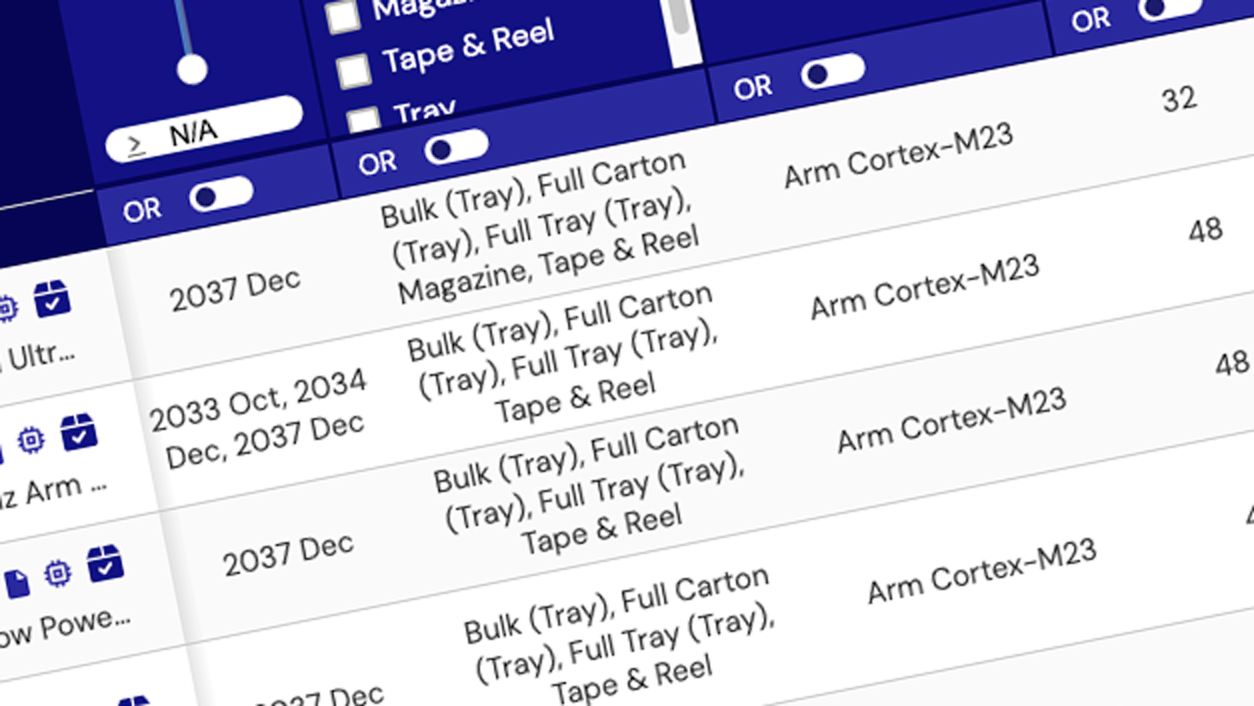Renesas Active Beamforming ICs for Phased Arrays enable cost-effective, next-generation system solutions for 5G, Satcom, and radar applications. Each beamforming IC contains multiple independently controlled active channels for element-level beam pattern shaping in electronically scanned array antennas (ESAs). The compact ICs are available in planar BGA packages enabling the realization of very low profile and small form factor phased array antennas with λ/2 element spacing. Transmit-only (Tx), receive-only (Rx) or transmit/receive (TRX) ICs cover all of the popular 5G mmWave, Satcom, and Radar frequency bands with product variants. Renesas’ beamformer product line is rapidly expanding to address the growing commercial demand for affordable phased array antennas.
5G mmWave TRX Beamformers
Renesas F5288 and F5268 8-channel dual-polarization TRX beamformers offer best-in-class performance at n257, n258 and n261 bands. Highly integrated beamformers are available in compact exposed-die BGA packages that fit perfectly into 2D phased array 2x2 antenna unit cells. Third-generation Renesas beamformers are leading the state-of-the-art with proprietary technologies such as Dynamic Array Power (DAP™), ArraySense™, and RapidBeam™.
Satcom/Radar Beamformers and Low Noise Amplifiers (LNAs)
Renesas Satcom/Radar portfolio consists of a family of 2nd generation transmit and receive ICs and LNAs supporting the three popular frequency bands of Ku-Satcom, K/Ka-Satcom, and Ku/CDL for satellite communications, point-to-point terrestrial communications, and radar applications. These ICs maximize the antenna array performance and power efficiency while also simplifying the physical implementation. The IC physical footprints are optimized for integration with a 2x2 sub-array of dual-polarized elements having λ/2 spacing. State-of-the-art built-in power management features and excellent gain/phase orthogonality and channel-to-channel isolation greatly reduce the thermal management and calibration requirements relative to other solutions, thereby enabling the lowest overall solution cost.
The Tx beamformers include F6521, F6522, and F6513 ICs covering the Ku- and Ka- Satcom uplink (Tx) frequency bands of LEO/MEO/GEO constellations and the Ku radar and Ku CDL bands. For downlink (Rx), the complementary part family consists of F6121, F6212/F6122 (module/standalone BFIC), and F6123 for Ku, K/Ka and Ku/CDL bands, respectively. The Rx beamformers may be paired with the F6921, F6922, and F6923 dual-channel low noise amplifiers to provide the highest possible G/T with the lowest system power consumption.
What is Phased Array Beamforming and Beam Steering?
Phased array beamforming ICs (“active beamformers” or “beamformers”) enable beamforming and beam steering by controlling the phase and amplitude of the RF signal at each radiating element of an antenna array, creating points of constructive and destructive interference at select locations in the free space radiation pattern of the antenna. This allows the formation of narrow beams of energy that can be rapidly and dynamically steered in the direction of a mobile user or terminal. Antennas utilizing this technology are known as Electronically Scanned Arrays (ESAs), Active Electronically Scanned Arrays (AESAs), or more simply as Phased Arrays.
Phased arrays enable more reliable and efficient connectivity at higher data rates. In satellite communications (Satcom), data links between terrestrial platforms and geostationary (GEO) or fast moving low earth orbit (LEO) satellites can be established more quickly and maintained more reliably compared to using a mechanically-steered antenna. In addition, the elimination of mechanical gimbal assemblies enables lower profile antennas, lower maintenance costs, and improved system reliability. In active antenna system (AAS) applications, phased arrays enable massive MIMO (mMIMO) operation in sub-7GHz and mmWave 5G networks resulting in much lower latency, higher capacity, and throughput.
While AESAs have been deployed in military applications for well over three decades, their relatively high cost and system size, weight, and power (SWaP) have been prohibitive for many commercial applications. However, the advent of silicon beamforming ICs and the allocation of higher frequency, mmWave spectrum bands are changing this paradigm and enabling widespread deployment of this technology.




